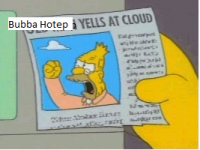Ntxw wrote:Hopefully we can sustain it. My understanding from various papers is that ENSO's tropical forcing plays a bigger role in shifting the PDO rather than the other way around since it has a higher energy budget. PDO often is a lag indicator to prior ENSO. So if the El Nino is coupling then we may see some real relief on the horizon.
I think we will be able to sustain it. El Niño is indeed slowly coupling with the mid-latitudes and that coupling will get stronger over the next few months. If accurate, you can see some of the results of this coupling in the Real Time CFS ULRF Projections as of today. There is distinct and very defined projection for a more large scale subsiding, stable atmosphere (less cloud cover) to set up over the Maritime Continent, Indian Ocean regions while a more rising, unsettled atmosphere (more cloud coverage) sets up near the International Date Line roughly around 180 Degrees West Longitude going forward through January. I guess this phenomenon is related to the Walker Circulation Branches. This more unsettled, upward branch of this Walker Circulation is projected to slide to the east as time progresses but not as far east as compared to the El Niños of 1997 or 2015. (I tried to paste the map here for illustration purposes but I can’t get it to paste.)
https://www.kylemacritchie.com/meteorology/showhovs.phpAgain, assuming this CFS forecast is accurate, the El Niño coupling will become more and more apparent as time passes. Now my only question or concern is how long will it take for us, as in the state of Texas, to reap some of the full benefits of this building El Niño. I can’t help but notice from that same CFS forecast, that there is a consistent signal or projection of more OLR (less cloud coverage) and more sinking, stable air roughly between 80 to 100 Degrees West Longitude through the same time period. I’ll take this with a grain of salt for now, but it will be interesting to watch to see if some of our regions, especially East Texas, ends up slightly drier than normal precipitation-wise through mid-January. One good thing I’ve noticed is that this CFS signal of less cloud coverage, sinking air weather pattern over our longitude is not as strong as it was forecasting before. Maybe this will be the beginning of more positive trend for our region going forward with respect to precipitation chances.












